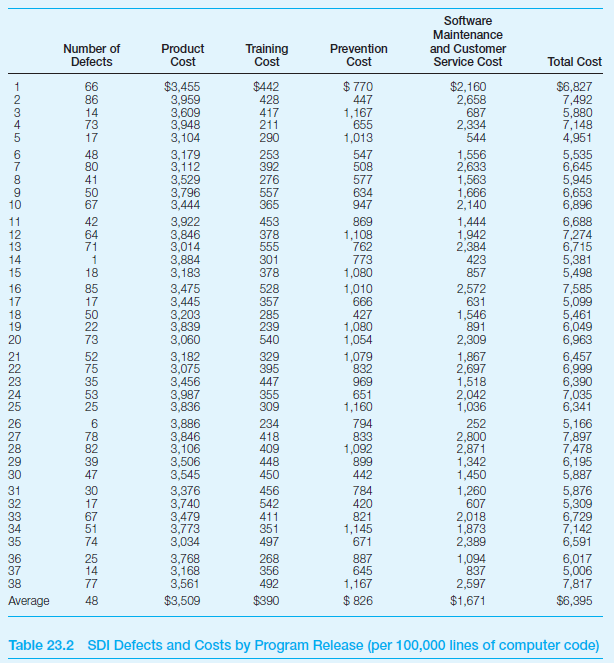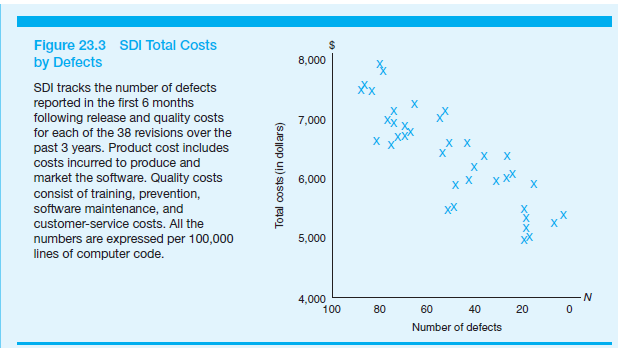Software Development, Inc., produces and markets software for personal computers, including spreadsheet, word processing, desktop publishing, and
Question:


with other software in terms of data transfers and interfaces? Does it terminate abnormally? In spite of extensive testing of the software, programs always contain some "bugs" (defects). Once the software is released, SDI stands behind the product with phone in customer service consultants who answer questions and help the customer work around existing problems in the software. SDI also has a software maintenance group that fixes bugs and sends out revised versions of the programs to customers.
SDI has been tracking the relation between quality costs and quality. The quality measure it uses is the number of documented bugs in a software package. These bugs are counted when a customer calls in with a complaint and the SDI customer service representative determines that this is a new problem. The software maintenance programmers then set about fixing the program to eliminate the bug. To manage quality, SDI tracks quality costs. It has released 38 new or major revisions in existing packages during the last three years. Table 23.2 reports the number of defects documented in the first 6 months following release. Also listed in Table 23.2 is total product cost and quality cost per software package release.
Product cost includes all the costs incurred to produce and market the software, excluding the quality cost in Table 23.2. Quality cost consists of these components: training, prevention, and software maintenance and customer service costs. Training costs are those expenditures for educating the programmers and updating their training. Better-educated programmers produce fewer bugs. Prevention cost includes the expenditures for testing the software before it is released. Maintenance and customer service costs are those of the programmers charged with fixing the bugs and reissuing the revised software and the customer service representatives answering phone questions. The training and prevention costs are measured over the period the software is being developed, and the number of bugs and the maintenance and service costs are measured in the first six months following release.
All the numbers in Table 23.2 have been divided by lines of computer code in the particular program release. Programs with more lines of code cost more and also have more bugs. Prior studies find that using lines of code is an acceptable way to control for program complexity. Thus, the numbers in Table 23.2 are stated in terms of defects and cost per 100,000 lines of code.
Figure 23.3 depicts the relation between total quality cost and number of defects. The vice president of quality of SDI likes to use Figure 23.3 to emphasize that costs and quality are inversely related.
She is fond of saying, "Quality pays! Our total costs are a declining function of the number of defects. The more we spend on quality, the lower our costs." Based on this analysis, the vice president has recommended a major investment in quality improvement, focusing specifically on prevention and training.
Evaluate the vice president's analysis:
1. What criteria should be used in deciding whether to invest more in quality?
2. Do you have sufficient data to evaluate such an investment proposal?
Step by Step Answer:

Managerial Economics and Organizational Architecture
ISBN: 978-0073523149
6th edition
Authors: James Brickley, Clifford W. Smith Jr., Jerold Zimmerman





